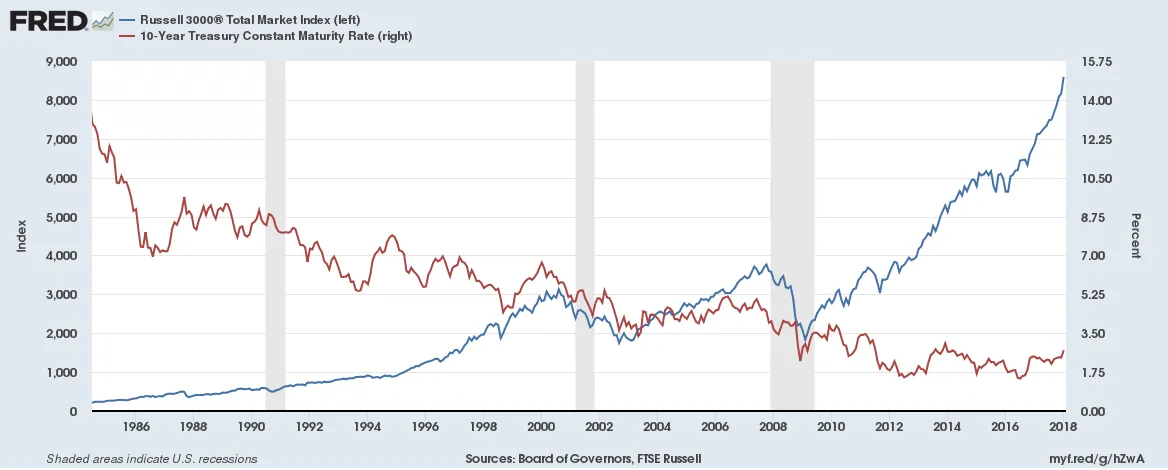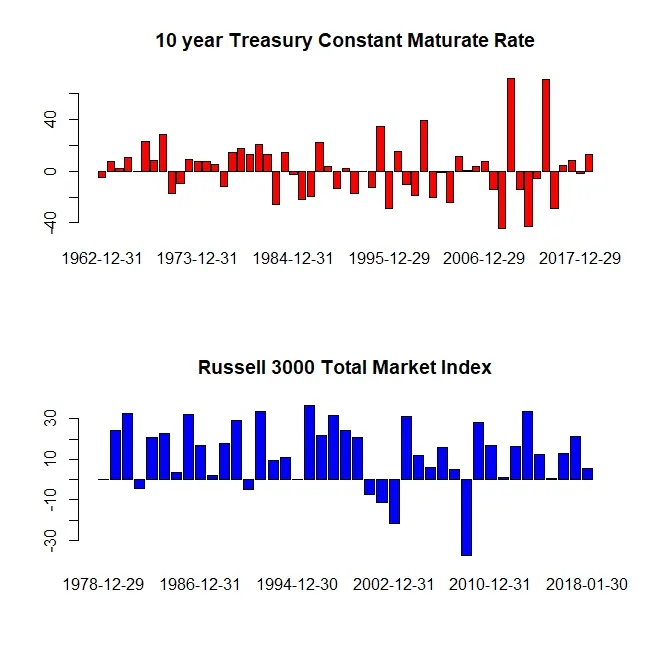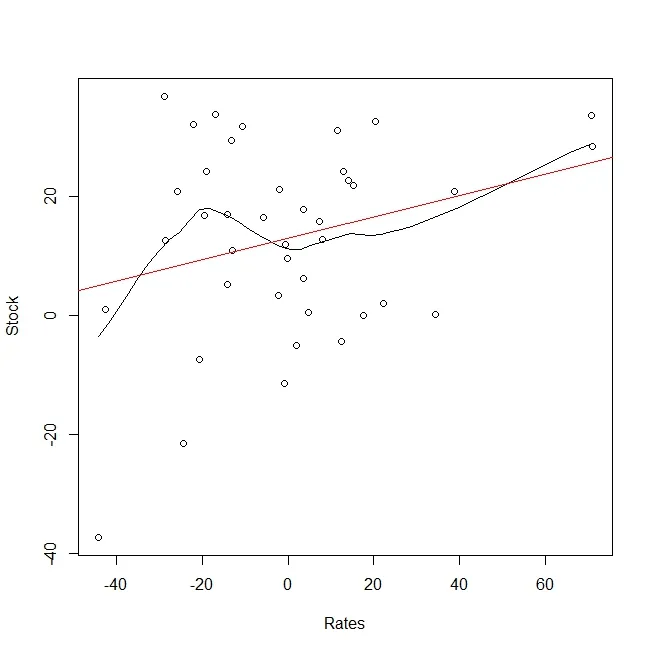며칠전에 미국 장기 국채금리가 상승하면서 미국증시또한 하락했는데 과연 이두가지는 어떠한 상관이 있을까요? 장기금리는 경제전망과 물가상승률에 민감합니다. 현재 미국경제가 확장하고 감세정책이 국회에 통과하고 정부의 막대한 사회간접 자본투자가 예상되면서 인플레이션이 상승할것이라는 분위기가 조성되면서 자금이 장기채권시장에서 이탈하면서 금리는 상승했습니다. 이후 단기적으로 미국증시도 하락했지만 이것은 그동안 너무 빠르게 오른 증시에 차익을 실현하려고 하는것이지 경제는 계속해서 좋아지기 때문에 증시는 바로 회복했습니다.
경제가 좋아지면 기업의 이익증가 기대로 증시는 상승합니다. 이것을 인컴효과 (Income effect) 부릅니다. 그리고 기대 인플레이션도 상승하면서 장기금리도 상승합니다. 하지만 금리상승은 기업의 금리비용도 늘어나기 때문에 기업의 이익이 줄어듭니다. 이것을 대체효과(Subsitution effect) 그래서 증시는 다시 조금 하락합니다 . 지난 몇년을 제외하고는 대체로 금리와 증시는 같은 방향으로 움직였습니다. 즉 경제가 좋아지면 금리 와 증시 모두 상승하고 반대로 경제가 둔화되면 증시와 금리 모두하락합니다. 하지만 지난몇년은 연준의 양적완화와 기업들의 자사주식 매입과 기업인수 합병 (이것을 기업이 행하는 양적완화라고 부른다)으로 증시는 상승했지만 금리는 하락했습니다. 이제 미국경제가 완연히 상승기에 접어들면서 기대인플레이션이 상승하면서 장기채권투자자들이 채권을 매도하면서 금리가 상승하게된것입니다. 그리고 증시도 하락했지만 이것은 일시적인것이라 곧 증시는 곧회복했습니다. 중장기적으로는 금리와 증시는 대체로 같은 방향으로 움직입니다.
A few days ago, as US long-term Treasury yields rose, the US stock market fell, but what's the relationship between two variables? Long-term interest rates are sensitive to economic outlook and inflation. Interest rates have risen as the US economy is currently expanding and inflation is expected to rise as recent tax cuts and massive SOC investment is expected. So, investors sold US long-term bonds in the bond market. Since then, the US stock market has fallen in the short term, but this is because the stock market rose too fast so, investors sold to make profits, and the economy has continued to improve.
As the economy improves, the stock market rises profits are expected to increase. This is called an income effect. And anticipated inflation rises and long-term interest rates also rise. However, rising interest rates lead to an increase in corporate interest rates, which reduces corporate profits. This is the substitution effect. So the stock market drops a little. Except for the past few years, interest rates and stock markets generally move in the same direction. In other words, if the economy gets better, both interest rates and stock market rises, and if the economy slows down, both stocks and interest rates fall. The stock market has risen and interest rates have declined, as the Fed's quantitative easing, corporate buybacks and mergers and acquisitions (called corporate quantitative easing) have risen. Now that the US economy is on the rise, expect inflation has risen, so interest rates have risen as long-term investors have sold bonds. And the stock market fell, but this was only temporary, and the stock market recovered soon. In the medium to long term, interest rates and stock markets generally move in the same direction.
 ![two bar plots in one.jpeg]
![two bar plots in one.jpeg]
아래차트는 금리 ( 10 year Treasury Rate 장기국채 ) 와 미국증시 (Russell 3000 Index) 의 연평균 변화률입니다.
The chart below shows the annual of changes in interest rates (10-year Treasury rate long-term government bonds) and the US stock market (Russell 3000 Index).
( )
)
아래차트는 미국10년국채 금리 연변화율과 미국증시 연변화율을 비교하면 그 기울기 가 낮지만 같은 방향으로 움직이는것을 볼수가 있습니다. 이두연변화율의 상관지수는 0.29 입니다.
The chart below shows that the annual changes of 10-year US Treasury bond rate and the US stock market. The Regression line shows gentle slope and moves in the same direction. The correlation coefficient of the annual changes of two measures is 0.29.
